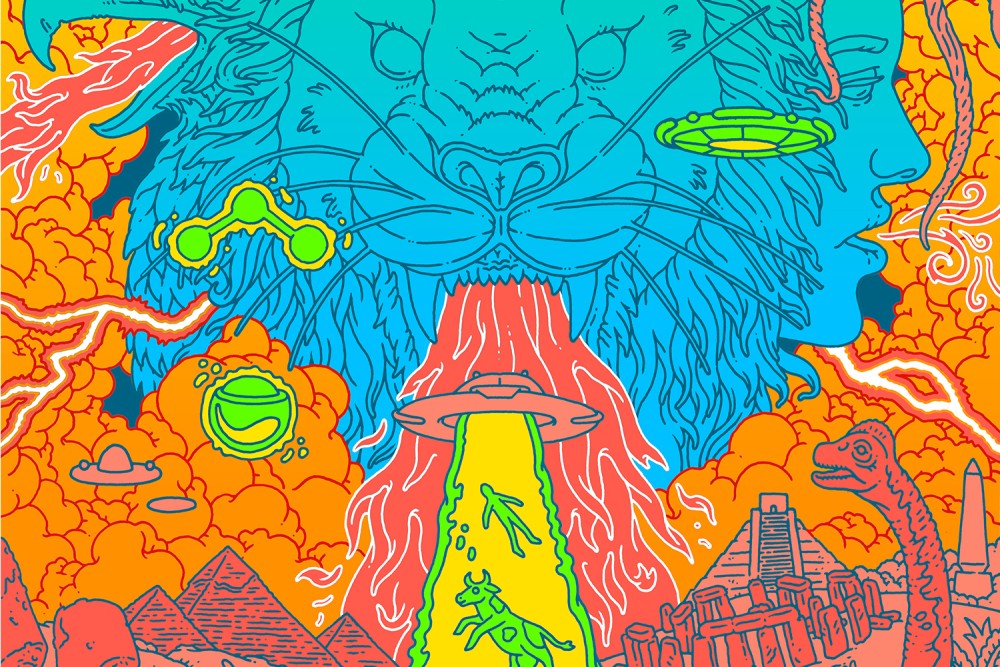The pedagogy of Ancient Aliens
Why I teach ancient astronaut theory as part of Intro to Religion

(Illustration by Eric Nyquist)
I admit, when I first encountered the ancient astronaut theory by way of the popular History Channel series Ancient Aliens about ten years ago, I laughed. The Intro to Religion student who recommended it to me seemed taken aback. “But it affects your field and our faith,” he said. I could tell by the look on his face that he was serious—and that he had questions.
Ancient Aliens, now in its 19th season, is based on the work of Swiss writer Erich von Däniken, whose book Chariots of the Gods?—published in the late 1960s at the apex of the space race—is a cult classic. Von Däniken claims that “our forefathers received visits from the universe in the remote past . . . these ‘strangers’ annihilated part of mankind existing at the time and produced a new, perhaps the first, homo sapiens.”
Obviously, that’s an astounding claim, especially that last bit about aliens committing genocide. Von Däniken had grown tired of what he considered “inconsistencies” in archaeology and religion, like who created Stonehenge or the pyramids and why, anomalies that he thought could not be explained by the prevailing scientific theories of the day. He wanted “to introduce a new working hypothesis and place it at the very center of our research into the past.” That hypothesis includes the claim that deities of most religions, including Jesus, were actually extraterrestrials. This is what became known as the ancient astronaut theory.




